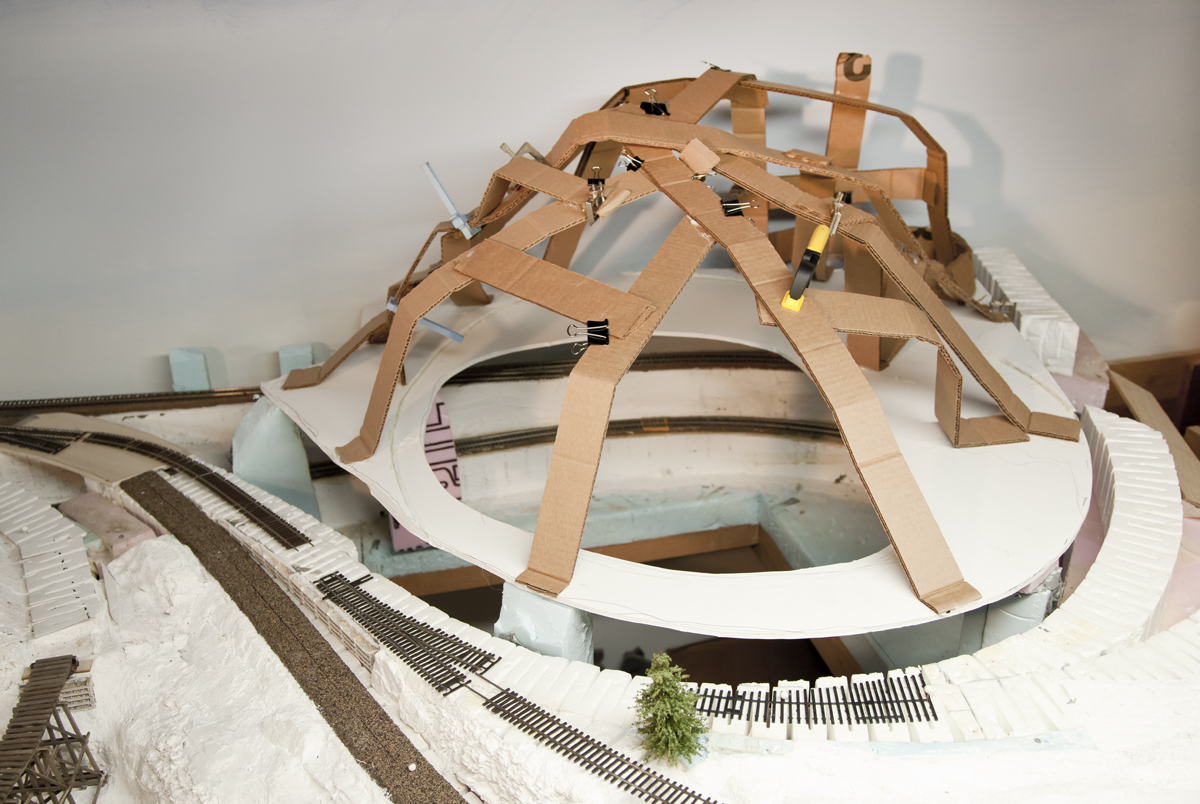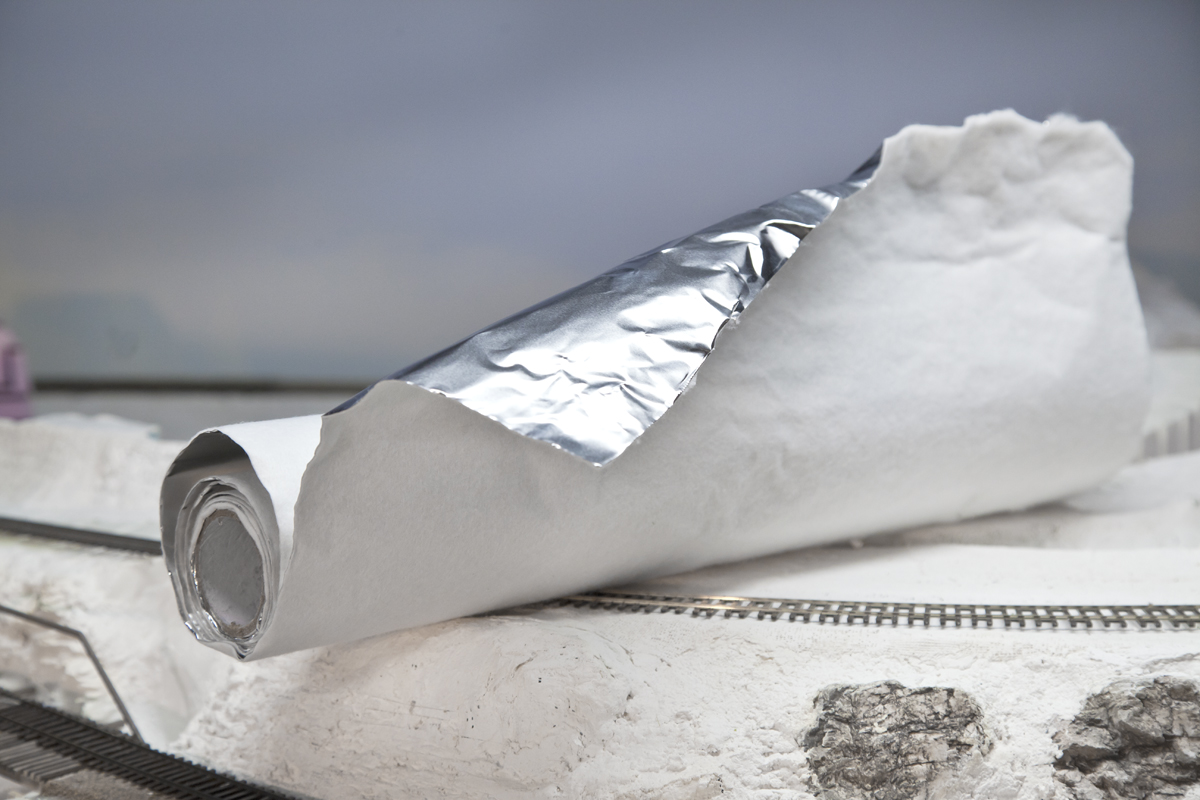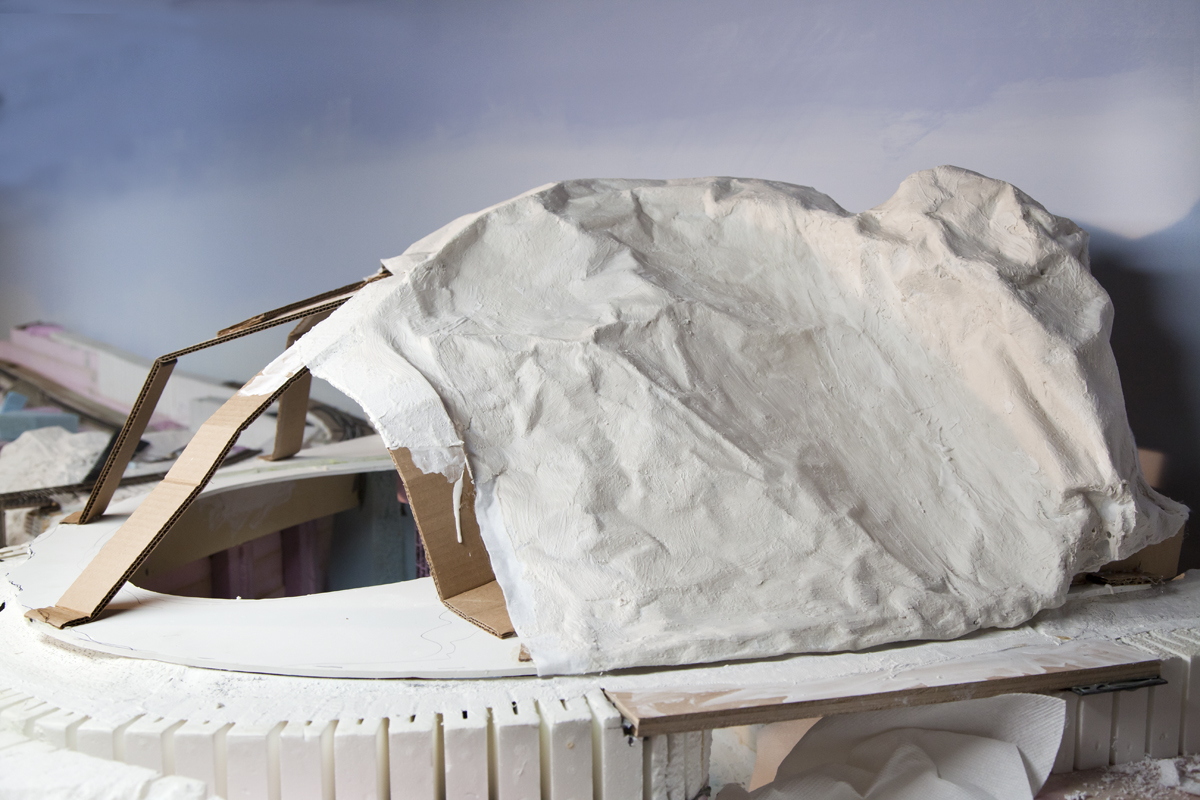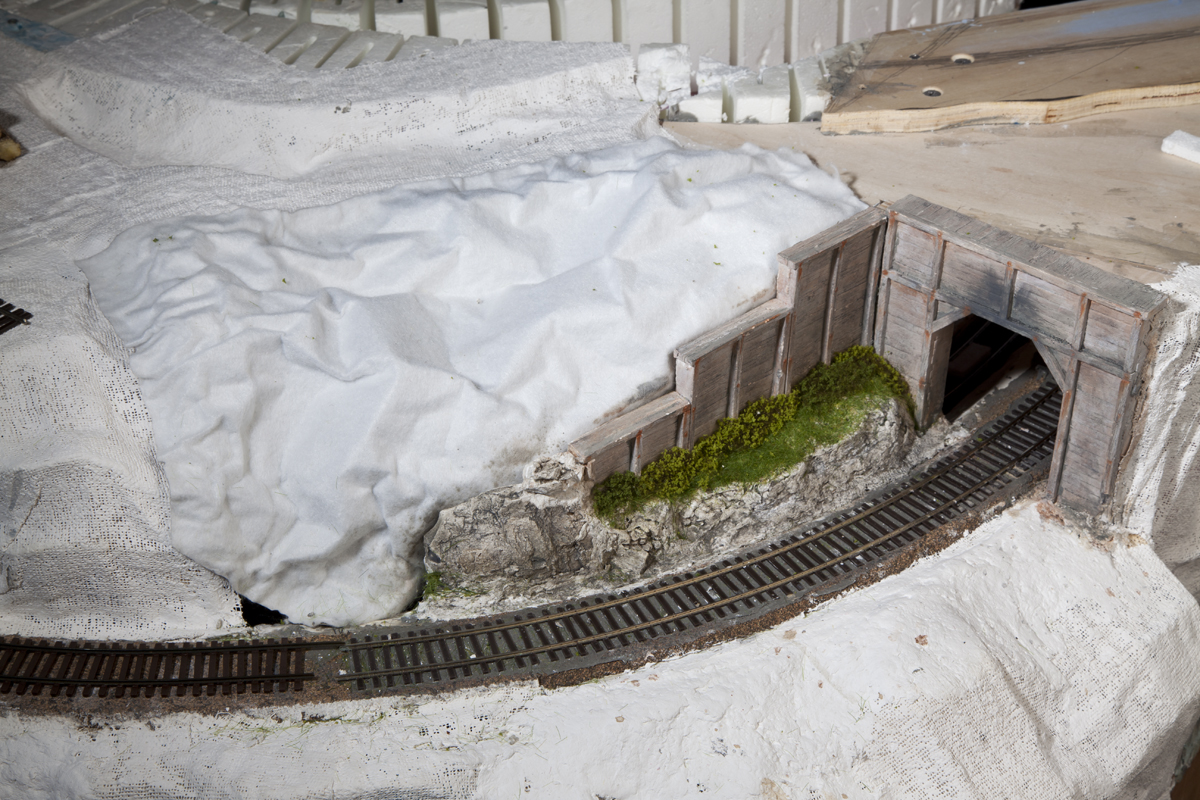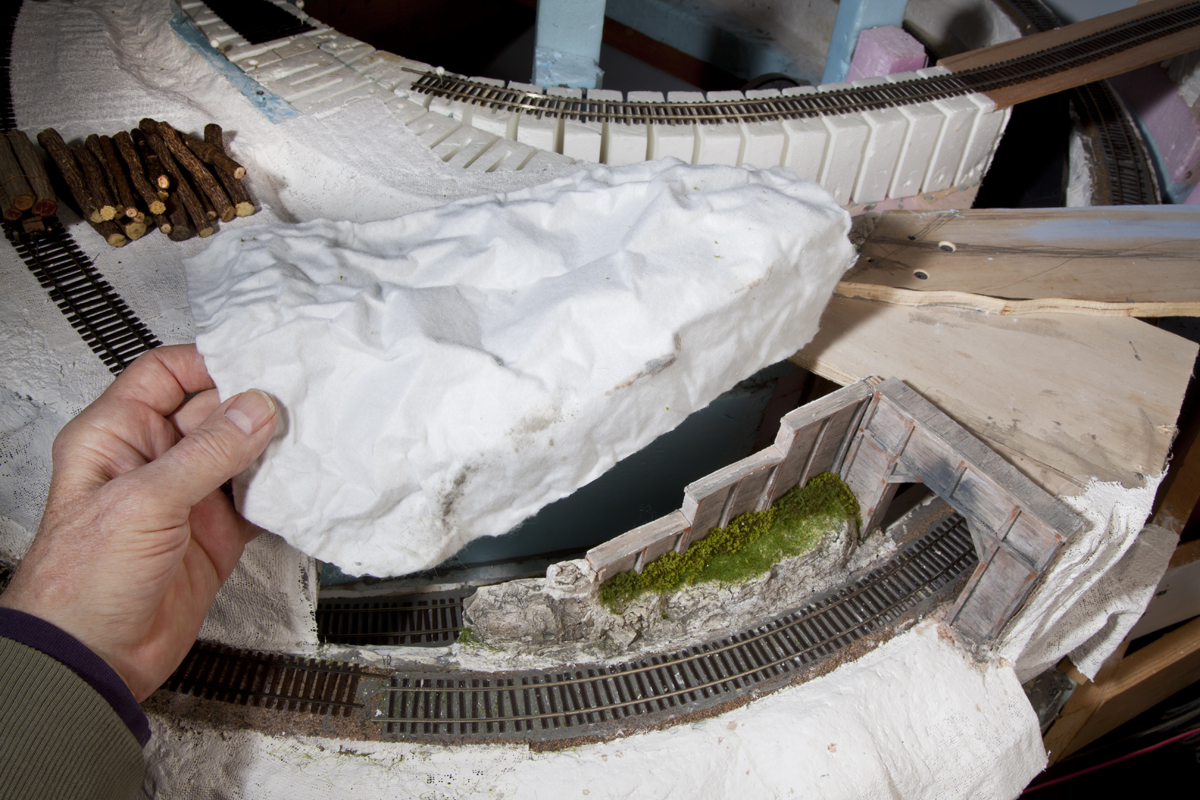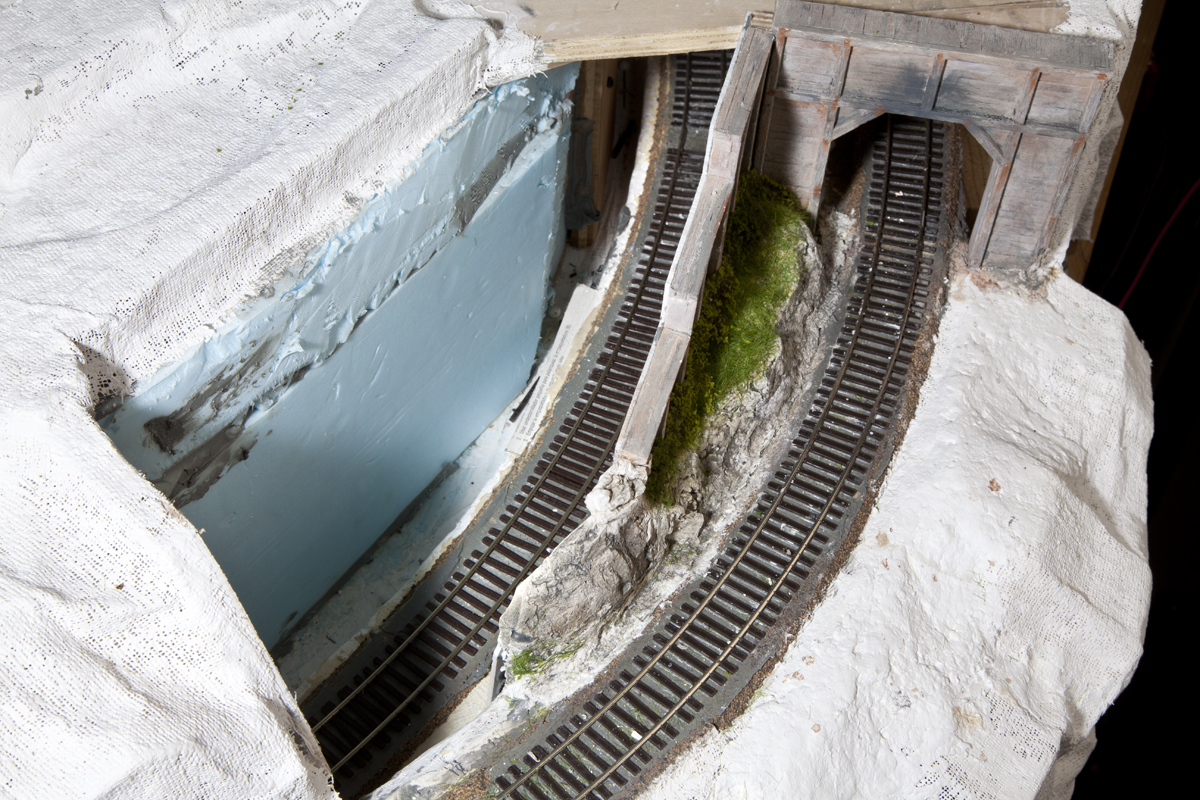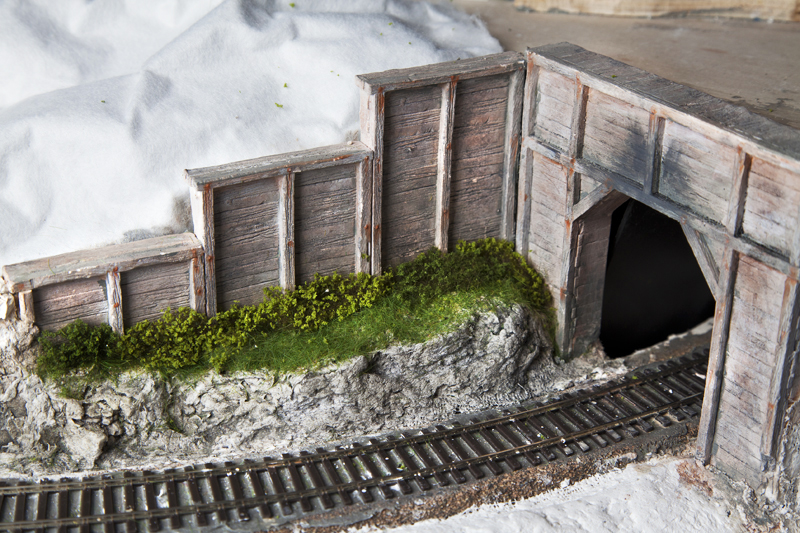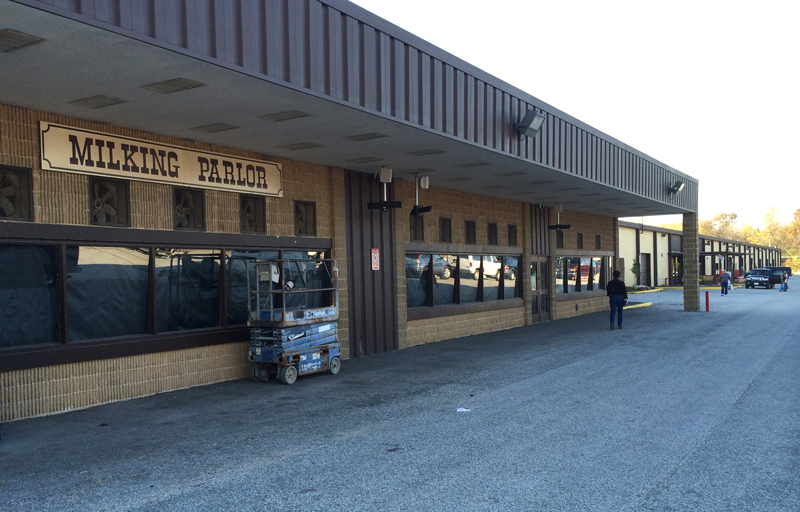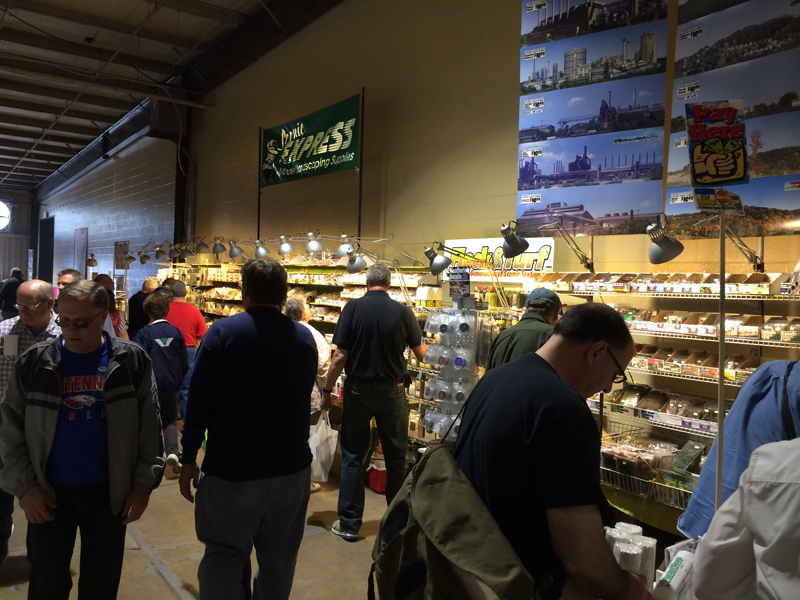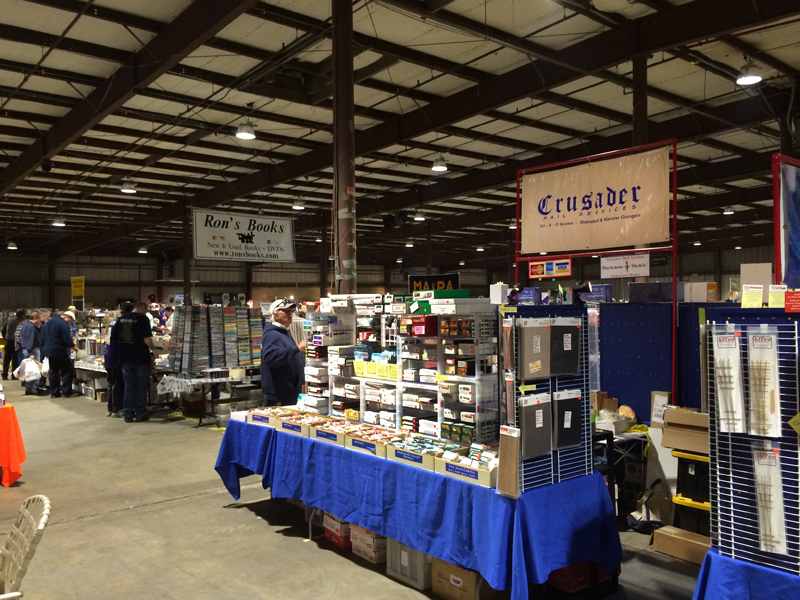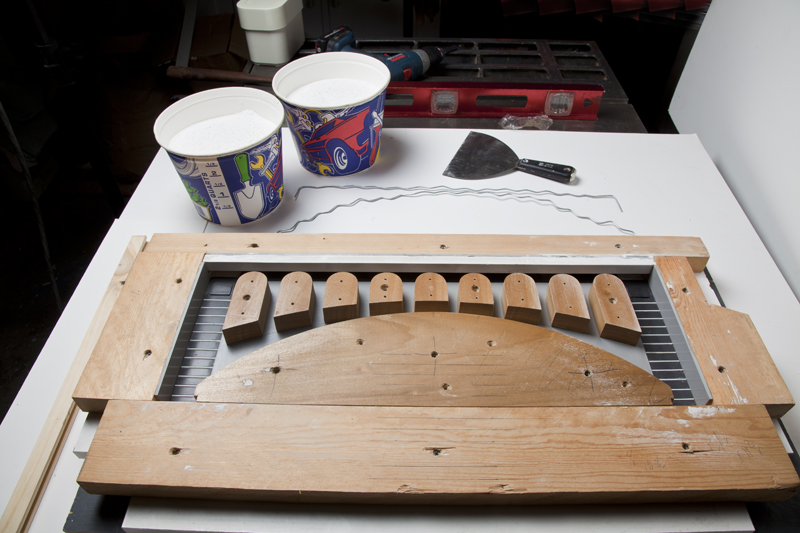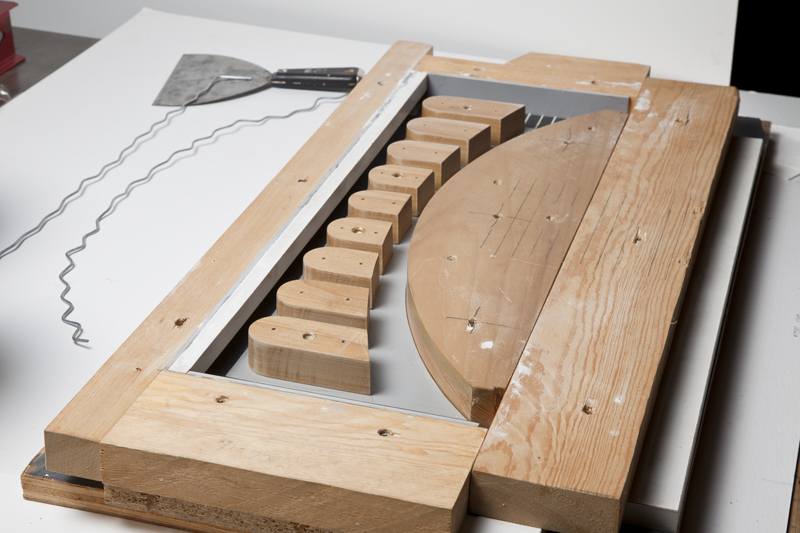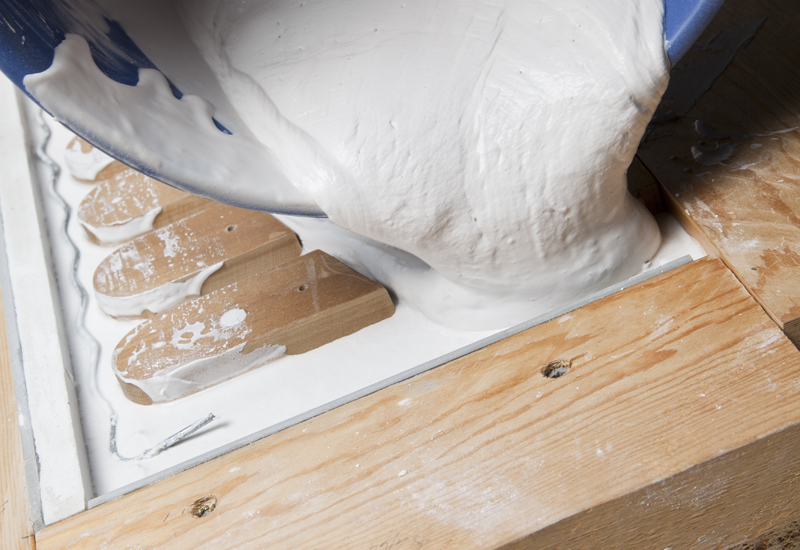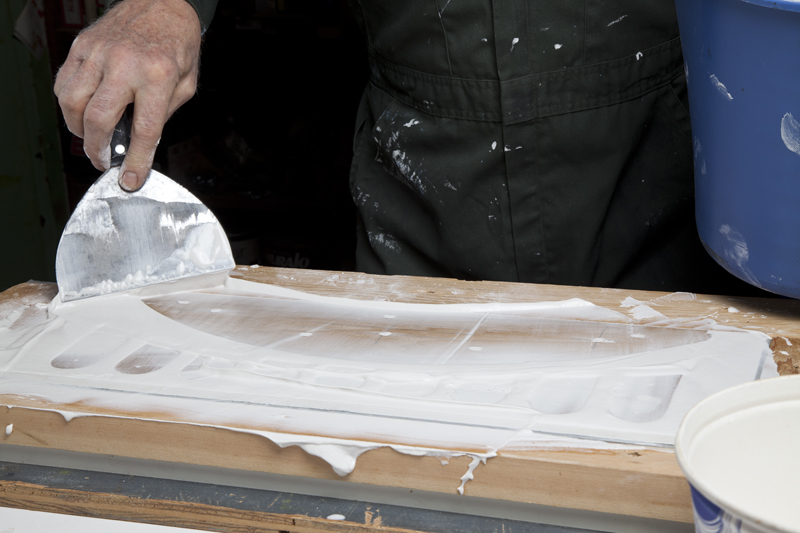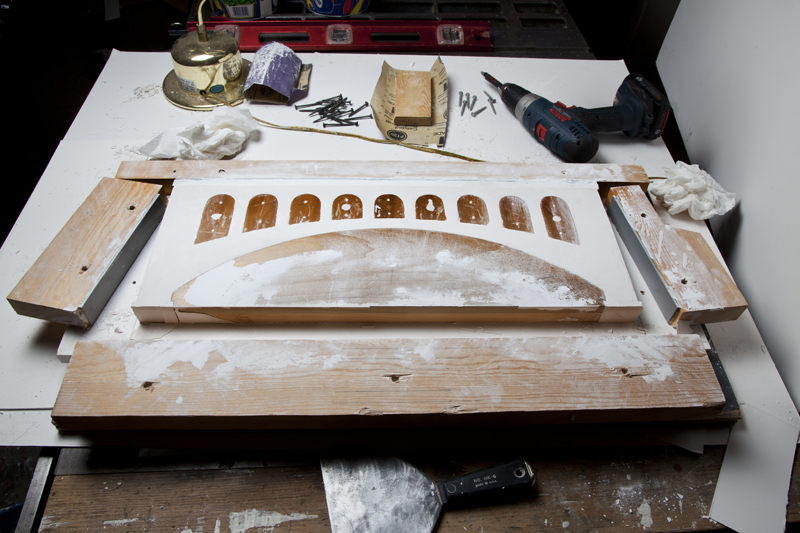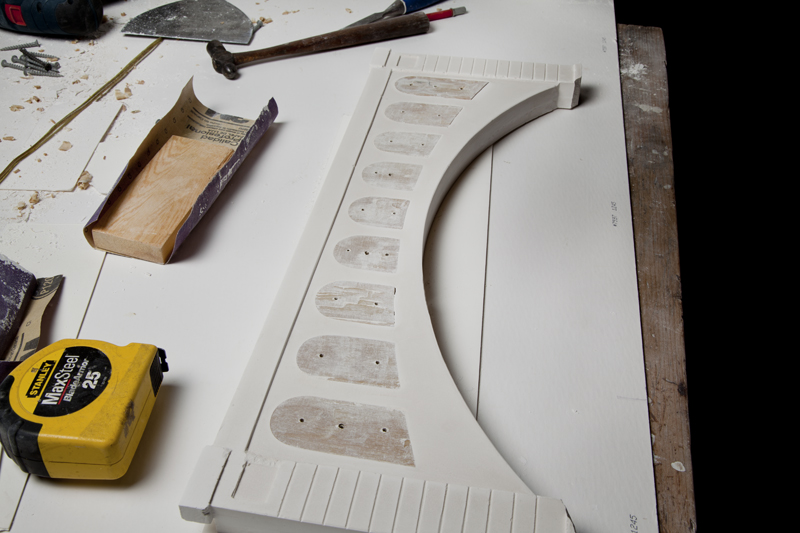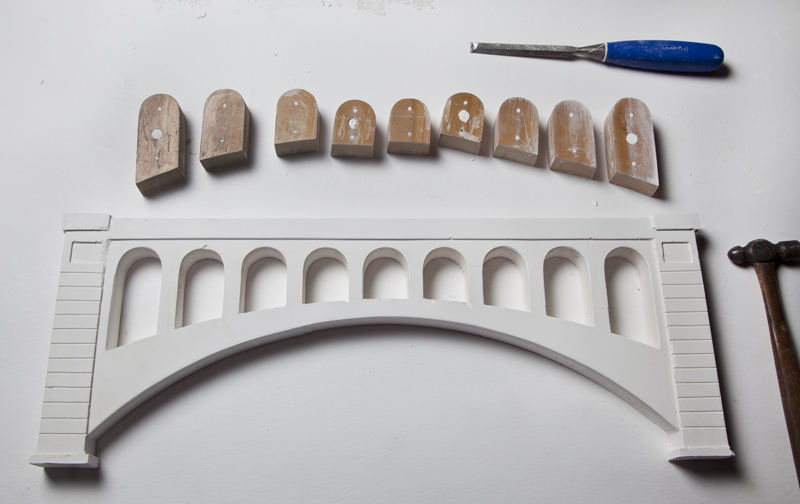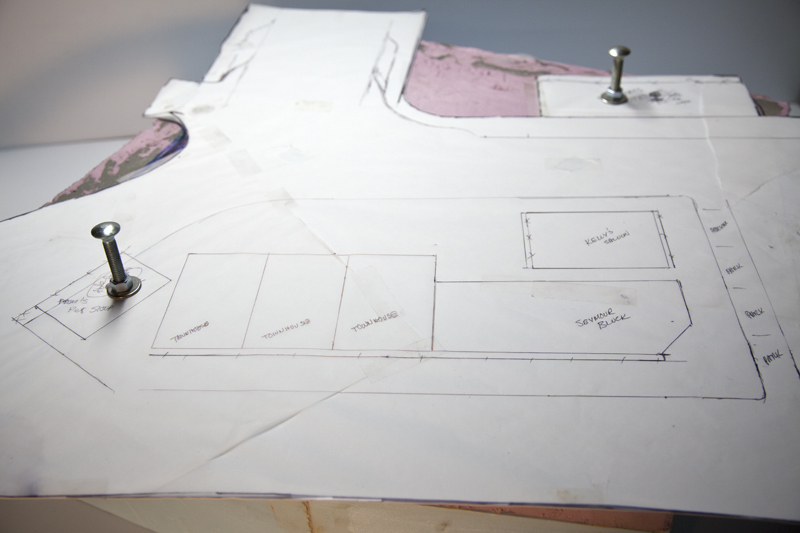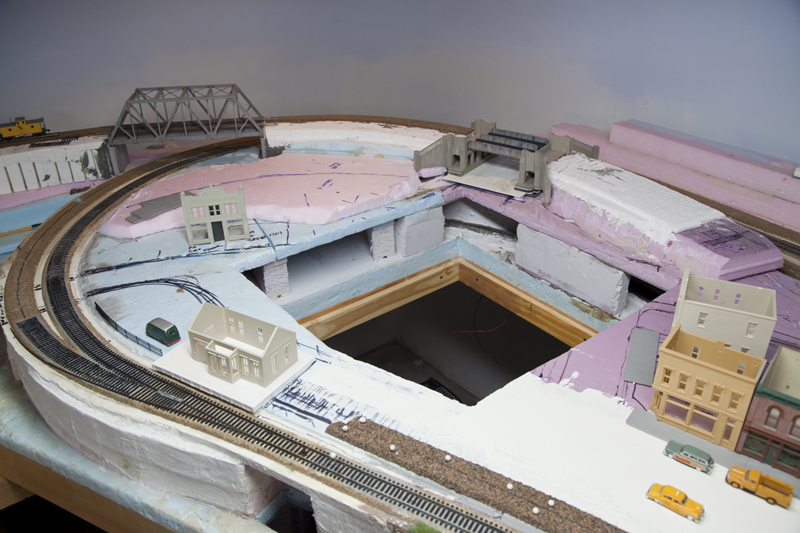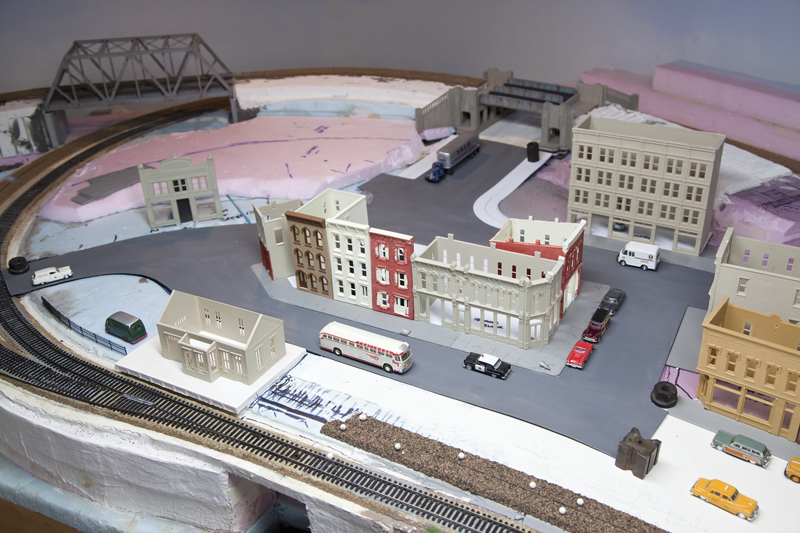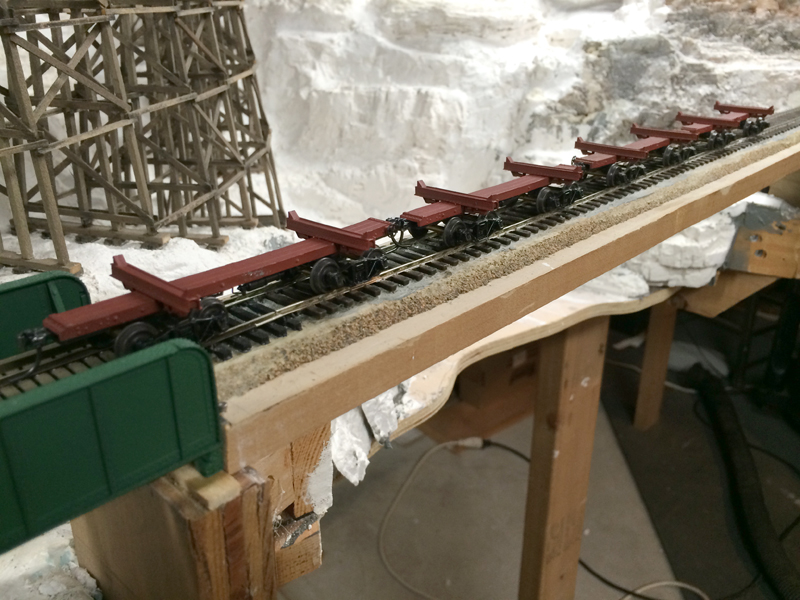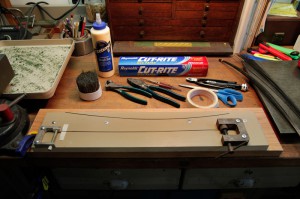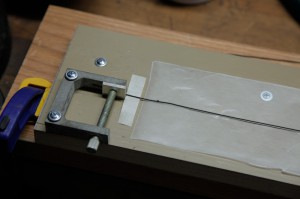Starting to get whole logging area working, and I needed a mountainous area for logging but it should be removable because it would be over several fairly long track tunnel sections. I thought a base of foamcore would work, be light but strong enough with a structural frame above, making it more ridgid.
Thinking about how I would do this, I decided to try the new shaper sheet material, but even though Woodland Scenics says it needs no under support, I wanted to visually rough in the mountain and thought a hot glued cardboard strip web would also give it more strength, since it would be movable. Actually I do not think it will have to be moved all that much because even with a derailment under the tunnel, you can pop up inside the mountain enough to retrieve a car or engine.
The Shaper Sheet material shown is interesting as it has a very heavy foil backing with a fabric adhered to the foil, that mechanically bonds with applied plaster. Woodland Scenics has a Plaster made for it which I believe is lightweight Hydrocal with a retarder to slow the hardening so there is time to work a soupy mix, and get it into all the crevices.
Here is the mountain partially covered with the Shaper Sheet material and matching plaster


